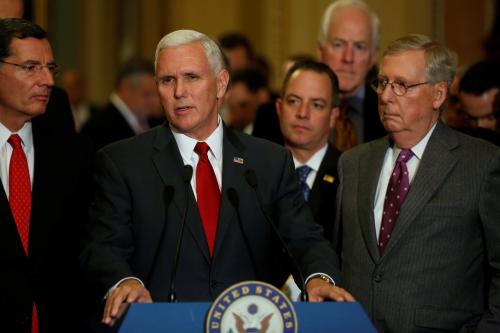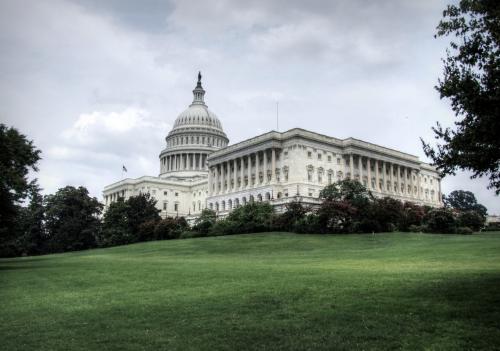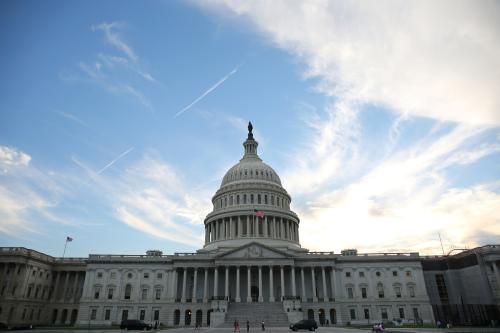In the days since the surprise election of Donald Trump to the presidency, substantial attention has been paid to the possibility that congressional Republicans will take advantage of a Republican president’s pen to repeal all or part of the Affordable Care Act, possibly as soon as January. Doing so will almost certainly involve a special budgetary process known as budget reconciliation, which, thanks to a limit on time for debate, eliminates the possibility of a filibuster. Reconciliation and other similar procedures for limiting debate in the Senate (which I’ve written on elsewhere) are often described as “arcane,” and certainly, the coming weeks are likely to bring several procedural twists, likely with big policy implications, worth watching. Given the centrality of the law’s repeal to Republican messaging—the House has voted on repeal more than 60 times—the political implications of the foregoing debate are large as well. Here are three key questions I’ll be watching for the answers to as the debate unfolds, as they’ll tell us much about the both the policy and political implications of Republicans’ repeal efforts.
Do Republicans lay the necessary groundwork for a quick move in January?
In order to move a repeal bill via reconciliation quickly in January, congressional Republicans will need take an important step, either during the lame duck session that began Monday or after the new congress convenes in January. Initiating the reconciliation process requires what are known as “reconciliation instructions,” which direct individual congressional committees to report out legislation that reduces the deficit by a certain amount. These instructions are contained in the yearly congressional budget resolution, but thanks in large part to intra-party divisions, congressional Republicans did not adopt a budget resolution this spring. Thus, they lack a key piece of the procedural infrastructure for moving a reconciliation bill quickly. Republicans have raised the possibility of resurrecting this year’s failed budget resolution to address this challenge. While consideration of the budget resolution is itself subject to a debate limit and does not require the president’s signature, whether congressional Republicans actually adopt it in either the lame duck or early January will be a key signal of how quickly they plan to move.
Do Republicans follow the template from the 2015–16 “test drive”?
The content of a reconciliation bill is limited by what’s known as the Byrd Rule, adopted first in 1985 out of concern that the process was being stretched beyond its original budgetary intent. Among the constraints created by the Byrd Rule are requirements that provisions are not “merely incidental” to deficit reduction, with the definition of “merely incidental” adjudicated by the Senate Parliamentarian. In late 2015 and early 2016, congressional Republicans took an ACA repeal reconciliation bill for a test drive in part to determine which provisions of the law could be repealed or rolled back without violating the Byrd Rule.
Armed with that knowledge, Republicans could simply take up a similar package. An important question, however, will be whether Republicans choose to try and go farther and attempt to include the repeal of additional provisions, including many of the law’s insurance market regulations. Some conservatives have pushed for this approach, but the Parliamentarian would still have to weigh in on whether such a move is permissible under reconciliation. In addition, many of the components left untouched by the 2015-16 “test drive” were among the law’s most popular, including the provisions related to pre-existing conditions and the ability to cover one’s children up to age 26. A push to actively repeal these popular components in pursuit of the goal of “complete repeal,” rather than let them potentially wither in the presence of a destabilized individual insurance market, would be an important signal of how aggressive congressional Republicans aim to be with their overall policy agenda in the coming weeks and months.
A second useful marker of how assertive Republicans intend to be involves the Medicaid expansion. The 2015-16 “test drive” eliminated it, but, as I wrote at the time, a bill that all sides know will be vetoed is shaped by different political considerations since it has no hope of becoming law. Scrapping the Medicaid expansion has the potential to create tensions with governors of states who have expanded the program, including several Republicans; some senators, including Senator John McCain (R-Ariz.), have recognized as such in the past. How the Medicaid expansion is addressed may serve as a second preview of potential conflicts as Republicans make the transition to governing.
How long do Republicans give themselves to come up with a replacement?
In their six years of ACA repeal efforts, Republicans, knowing that they could not complete the first half of the “repeal and replace” equation, have been able to avoid drafting a concrete bill to accomplish the second. With a Republican in the White House, however, congressional GOPers face a different political calculus: deliver on the “replace” commitment or face the criticism that they have just created millions of uninsured Americans. The “test drive” bill delayed implementation of the repeal until 2018 to provide time to accomplish this task, and a new measure would likely do similarly, perhaps extending the effective date until 2019, after the congressional midterms.
How long Republicans give themselves to come up with a plausible replacement is important because they have struggled with this task repeatedly, in part because of intra-party divisions over exactly what such a plan should look like and knowledge that, with a Democrat in the White House, the plan would not be enacted. The most recent effort, rolled out in July 2016, was met with mixed reactions from key conservative interest groups. Of the process of developing the plan, one Republican congressman said, “if you live in the Republican conference…I don’t think Jesus could get everyone to agree on everything.” Of course, intra-party conflict can look different in the cold light of unified government. Republicans may find the prospect of actual policy change under just what the doctor ordered for resolving some of their internal disputes, or they may simply find a way to avoid replacement at all. The framework they set out for the path forward, however, begins with the choices they make in a reconciliation measure, and these decisions, like the others discussed above, may also shed useful light on what’s to come under unified Republican government.






Commentary
Keeping tabs on a potential ACA repeal: Three questions to watch
November 15, 2016